- Register
- Log in to Tune-In
- Wishlist (0)
-
Shopping cart
(0)
You have no items in your shopping cart.
Beatles News

On the last weekend of September in 1963, 10-year-old Alan Crawford wasn’t really clued into what not-yet-famous-but-soon-to-be rock star was visiting his rural stomping grounds of southern Illinois.
Why should he have been?
The big news for him that Sunday –- Sept. 29 – was the final game of the Major League baseball season and, more significantly, the final game in the career of the great Stan Musial of the St. Louis Cardinals. That region of the country is Cardinals territory, and Crawford, who lived on a farm near Eldorado (pronounced “el-do-RAY-doh”) at the time, was a big Redbirds fan.
So big that going on six decades later, when we spoke on the phone the other day, he recounted how he would have been listening to the game on the radio that afternoon: “Cardinals won, 3-2, in the bottom of the 14th when Dal Maxvill, who was like a .200 lifetime hitter, hit a double to knock in Ernie Broglio.”
Source: BILL LOHMANN Richmond Times-Dispatch
details
George Harrison’s role in The Beatles was a simple one to begin with. He was the unique guitarist who stood behind the principal songwriters of John Lennon and Paul McCartney, ready to harmonise at the drop of a hat. But by 1969 things had changed.
Harrison had found his musical chops and was now keen to enact his songwriting skill on the Fab Four’s records. It was not met with enthusiasm from John and Paul. It would lead to Harrison temporarily quitting the band and after storming out of the Get Back sessions. Harrison would prove his detractors wrong and write one of the best tracks in the band’s extensive back catalogue.
George Harrison had begun to work out his musical style by the turn of 1969. Having spent much of the latter part of the previous year with Bob Dylan and The Band, working on tracks like ‘I’d Have You Anytime’, and with his work on The Beatles so widely loved, Harrison had hope for the future of the Fab Four.
Source: Jack Whatley/faroutmagazine.co.uk
details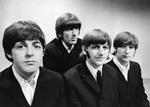
The Beatles have influenced numerous artists, particularly other British rock bands. It’s hard to imagine the Electric Light Orchestra or Oasis existing without them. Their influence also exerts itself in unexpected ways. Queen’s music sounds very different from the Fab Four’s, but Queen’s music was nevertheless influenced by John Lennon and company.
Brian May opened up about the Fab Four’s influence on his band. May knew there was something magical about the band from the first time he heard one of their early hits. May also said the White Album helped Queen find their musical direction.
Source: cheatsheet.com
details
Mick Jagger has responded to Paul McCartney’s recent comments that the Beatles were “better” than the Rolling Stones. McCartney’s initial statement came during an April 14 conversation on Howard Stern's radio show. When the host asserted that the Beatles were superior to the Stones, McCartney agreed, opining that his band had a more varied sound.
“[The Stones] are rooted in the blues. When they are writing stuff, it has to do with the blues. Whereas, we had a little more influences,” McCartney explained. “There’s a lot of differences, and I love the Stones, but I’m with you. The Beatles were better.”
“That’s so funny. He’s a sweetheart. There’s obviously no competition,” Jagger said when asked for his response by Zane Lowe of Apple Music. “The big difference, though, is and sort of slightly seriously, is that the Rolling Stones is a big concert band in other decades and other areas when the Beatles never even did an arena tour, Madison Square Garden with a decent sound system. They broke up before that business started, the touring business for real.”
Source: ultimateclassicrock.com

If a stay at home order has you feeling cramped in your living situation, at least you're not packed into a submarine.
On Saturday, The Beatles' YouTube channel is hosting a sing-along watch party for the 1968 animated movie, Yellow Submarine. Viewers of the psychedelic film can follow the lyrics to songs like All You Need Is Love and Lucy in the Sky With Diamonds featured in the movie.
"For those of you missing singing together, I've got good news," Beatle Ringo Starr said in a video via Twitter on Wednesday.
Source: Erin Carson
details
We’ve talked extensively about the Beatles and their music. But, we often seem to forget that they were eye-candies too. After all, that’s one of the reasons why the girls were mad for them which gave us the Beatlemania! But, it seems that some have a special eye on George Harrison. He was quite the underrated Beatle, that’s for sure. But many believe that he was the hottest of the Beatles (If Paul and Ringo are reading this, please forgive me I love you just as much). So, let’s take a look at the many shades of George Harrison!
For this article, we’ll just look at George at the different stages of his life. Needless to say, he was a heart-throb in all of them.
Source: Ali Arslan Ahmed/dankanator.com
details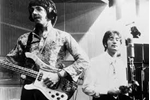
During their run in The Beatles, John Lennon and Paul McCartney took turns as the dominant forces in the band. Around the time of A Hard Day’s Night (1964), John’s creativity and overall songwriting production were unparalleled.
Looking back on his Beatles career in 1980, John saw that fertile period as a product of youthful energy. “You can never be 24 again,” he told Playboy’s David Sheff. “You can never be that hungry twice.”
A few years later, with The Beatles wealthy enjoying stunning wealth and worldwide fame, Paul became the band’s dominant figure while making Sgt. Pepper’s Lonely Hearts Club Band and Magical Mystery Tour (both 1967).
Thinking about what changed during that period, John noted the shift in his lifestyle (living with a wife and child outside of London) and how that contrasted with Paul’s life circa 1966-67.
Source: cheatsheet.com
details
Paul McCartney joined Howard Stern on his SiriusXM radio show last week, speaking out about the latter years of The Beatles’ reign before their split. While relationship were strained to a point, he said footage from the upcoming Get Back documentary, which is based on hours of never-before-seen footage from the Let It Be recording sessions, reveals the truth. The musical legend said, in fact, the film shows the friendships and creative spark between the band members and dispels the narrative which has grown and solidified over the years: that he and John Lennon hated each other and were “rivals” by the end.
The Beatles star also went on to share what Lennon really thought of his hit Let It Be amid assumptions there was a fiery disagreement about the song.
Source: Minnie Wright/express.co.uk
details
This was not the golden anniversary environmentalists had in mind for the 50th celebration of Earth Day (April 22).
The holiday dedicated to honoring Mother Earth and making sure we're doing all we can to preserve our natural world is, ironically, taking place indoors this year because of the global lockdown necessitated by the COVID-19 pandemic.
That hasn't stopped artists from doing their part to advance the cause, though.
Check out some of the efforts to shine a light on the importance of taking care of our planet from the likes of Paul McCartney, Lil Dicky, Kacey Musgraves, Bill Nye the Science Guy and many more.
Sir Paul remindedeveryone to "take care of this beautiful place." The photo was another Earth Day from long ago.
Source: Billboard
details
If you’re a Beatles fan who caught the One World: Together at Home special (Apr. 18, 2020), you got a treat. It came in the form of Paul McCartney performing “Lady Madonna,” the hit Fab Four single originally released in March 1968. (Paul dedicated his performance to healthcare workers everywhere.)
While Paul played a solo version of the track alone on an organ, you heard him deliver the classic lyrics about the woman with “baby at [her] breast” who “wonders how you manage to feed the rest.”
To many listeners, the title and references will have religious overtones. (Many fans heard the same in “Let It Be,” which Paul said he wrote about his own mother.) But Paul was thinking in more general terms when he wrote “Lady Madonna.”
Source: cheatsheet.com
details
George Harrison’s ‘Concert For Bangladesh’ was a turning point in popular culture, marking the first star-studded charity event which would go on and set a precedent for future charitable concerts. With the great and good of music all coming together to shine a light on a more than worthy cause, it all originated from the former Beatles guitarist’s original initiative where Bob Dylan well and truly stole the show.
The two very specially curated Concert For Bangladesh shows on August 1st, 1971, would go on and set a precedent for benefit gigs forever. The all-star day would see the likes of Bob Dylan, Billy Preston, Eric Clapton, Badfinger and Ringo Starr all take to the stage to unite for a cause bigger than themselves.
The shows came about after the former Beatles man held discussions his close friend Ravi Shankar who, detailing issues during a dinner meeting, initially planned to raise $25,000 dollars to help the Bangladeshi cause. However, after getting Harrison on his side, the modest plans quickly grew into something rather extraordinary.
Source: Joe Taysom/faroutmagazine.co.uk
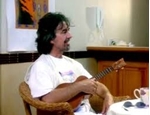
If you can subtract the spate of emo boys picking up the uke by way of softening their hardcore band in an attempt to pick up girls, then the humble ukulele may well be the cheeriest instrument of all time. George Harrison certainly thought so.
Though Harrison acted as the fulcrum of The Beatles with his idiosyncratic guitar playing, the ‘All Things Must Pass’ singer was anything but a purist. In fact, Harrison was known to love all kinds of music to some degree, but perhaps his most cherished instrument was his ukulele.
It may sound a bit silly but the facts are that Harrison, one of the foremost rock and roll guitars loved that wacky instrument. The guitarist confirmed his adoration for the small guitar when he bought a complex in Hawaii and began buying them in batches. In fact, most people who have had a crossing of paths with the late great George Harrison probably came away from the exchange with a shiny new ukulele to boot.
Source: Jack Whatley/faroutmagazine.co.uk
details
Any young millennials watching the One World: Together At Home broadcast at the weekend would be forgiven for wondering why Beatles-or-Stones was even a question at all. On the one hand you’ve got four cool old dudes split-screening themselves for a rendition of ‘You Can’t Always Get What You Want’ where the enthusiastic one has obviously forced the rest of them into it and one’s taking the piss by air drumming. On the other, some cheesy old duffer who can’t even work out landscape is tinkling through ‘Lady Madonna’, apparently an old jazz song that makes out that Madonna’s skint.
Stones win – no contest. Now can we please get back to discussing 1D vs BTS, or Boris Johnson vs a similarly inept genocidal moron?
But as lockdown conversation runs into its last three subjects, the eternal question rears its head once more. That renowned and incisive bastion of investigative journalism Howard Stern raised this ever-pertinent issue during an interview with Paul McCartney just last week, skewering Sir Thumbs with the piercing accusation that The Beatles were brilliantest. “I love the Stones, but I’m with you,” Paul agreed. “The Beatles details
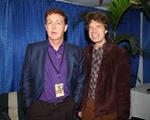
The Beatles and The Rolling Stones are two of the greatest rock bands in music history. Both were British boy bands who rose to fame in the 1960s. Both have songs fans know by heart and both are in the Rock and Roll Hall of Fame. Luckily, we don’t have to choose between them. We can have both. But if we did, Paul McCartney is a little bit biased.
McCartney called into The Howard Stern Show on April 14 from his home in England where he’s staying with family. When Stern started telling him The Beatles were better than The Rolling Stones, McCartney couldn’t help but agree.
“The Stones are a fantastic group,” McCartney said. “I go see them every time they come out because they’re a great, great band. Mick can really do it, the singing and the moves and everything. Keith and now Ronnie and Charlie, they’re great. They really are great. So I love them.”
Source: Cheatsheet
details
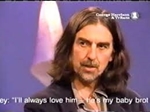
We’re dipping into the Far Out Magazine vault to revisit George Harrison’s final interview look and performance of the song, ‘All Things Must Pass’ before The Beatle’s sad passing in 2001.
The interview with John Fugelsang took place in 1997 and was just another piece of television at the time. Sadly, Harrison’s passing from throat cancer just a few years later would mean this would be his last public interview and performance.
In the nineties, following the unprecedented success of MTV there came around a television channel which, instead of bringing you all new music all the time like the aforementioned acid-coloured behemoth, took time to sit back and reflect on musical milestones gone by. The channel was VH1.
On it they would host illustrious guests of the classic rock era such as Paul McCartney, Pete Townshend and Eric Clapton and often Fugelsang would allow them space to chat about new projects, reflect on old ones and play some tunes. He later said of the gig that with it he had the opportunity to host &ldquo details
